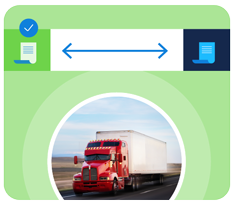The landscape of lease accounting has undergone significant changes, with the introduction of the standards IFRS 16, ASC 842, and GASB 87 a few years ago. These changes have shifted how organizations account for their leases, moving from a primarily off-balance sheet approach to recognizing lease assets and liabilities on the balance sheet. Within this framework, asset-level versus contract-level lease accounting concepts have become pivotal in understanding and applying these standards. This post aims to demystify these concepts, explore their differences, and highlight how lease accounting software can streamline the process.
What is asset-level lease accounting?
Asset-level lease accounting is where each unit of underlying physical assets (Property, Plant or Equipment) within a contract is accounted for separately. A leased asset is a part of a lease contract that provides the lessee with the right to use an underlying asset for a period. In asset-level accounting, each asset’s lease liability and right-of-use (ROU) asset are recognized, measured, and tracked independently. This granularity allows for more precise accounting and operational management of each leased asset, reflecting its specific terms and conditions, such as fair value, lease terms, payments, emissions usage, and lease lifecycle events.
For instance, if a company leases multiple spaces within a building together with a portion of the accompanying parking lot, asset-level lease accounting would treat each leased space within the building and each leased unit of the parking lot as separate lease assets. Each “asset” could be subject to different end-of-term options, lease lifecycle events, and other attributes. There could also be additional non-lease components that the lessee might want to account for separately.
What is contract-level lease accounting?
Contrary to asset-level accounting, contract-level lease accounting treats the entire lease contract as a single unit of account. This approach tries to simplify the accounting process by aggregating all assets under a single lease liability and ROU asset on the balance sheet. The key benefit here is reduced upfront effort in differentiating the individual assets from a valuation and tracking perspective.
Differences between asset-level and contract-level lease accounting
The primary difference between these two approaches lies in the level of detail and granularity in accounting for leases. Key distinctions include:
- Granularity and complexity: Asset-level accounting is more granular and sophisticated, enabling separate identification, measurement, modification, and management of each underlying asset. Contract-level accounting simplifies the process by treating all assets as a single unit.
- Accuracy vs. expediency: Asset-level accounting, while more accurate in reflecting the economic reality of each lease component, demands more time and resources in the absence of automation. Contract-level accounting, being less detailed, offers lower level of effort upfront but may sacrifice transparency and auditability, and accounting for splintered lease lifecycle events impacting individual assets can turn out to be very complicated in retrospect.
- Applicability: The choice between asset and contract-level accounting often depends on the nature of the underlying assets and the likelihood that they may be subject to different lease lifecycle events individually. Emissions tracking might be better suited to asset-level accounting as well. Homogenous assets that remain in sync throughout the lease term would be conducive to contract-level accounting.
- Financial impact: The need for financial reporting and auditing transparency would influence the decision to adopt asset-level versus contract-level accounting.
How LeaseAccelerator can help
Lease accounting software like LeaseAccelerator has become indispensable in navigating the complexities of lease accounting standards. Here’s how our software can help with both asset-level and contract-level lease accounting:
- Automation and efficiency: Software can automate the calculation of lease liabilities and ROU assets, saving time and reducing the risk of errors, especially in asset-level accounting, where calculations are more complex.
- Compliance: It ensures true compliance with IFRS 16 and ASC 842 by providing built-in templates and calculation engines designed according to these standards.
- Net-zero progress: Emissions usage data must be collected and managed at the asset level for equipment and real estate spaces, regardless of the financial accounting approach.
- Data management: Lease accounting software centralizes lease data while allowing a decentralized interface, making it easier to manage, update, and report lease information accurately.
- Scalability: As businesses grow and their lease portfolios expand, software solutions can scale to accommodate increasing complexity and volume, ensuring consistent and reliable lease accounting.
- Decision support: Advanced analytics and reporting capabilities can help businesses understand the financial impact of their leasing activities, aiding in strategic decision-making.
The choice between asset-level and contract-level lease accounting depends on each business’s specific needs and circumstances. Asset-level accounting offers precision and transparency. Contract-level accounting provides initial simplicity when lease accounting is predominantly manual but maybe neither sustainable nor scalable. Regardless of the approach, leveraging lease accounting software is vital for achieving compliance, efficiency, and accuracy in managing lease portfolios in today’s complex regulatory environment. Request a demo to see how the two approaches come together in LeaseAccelerator’s platform.







